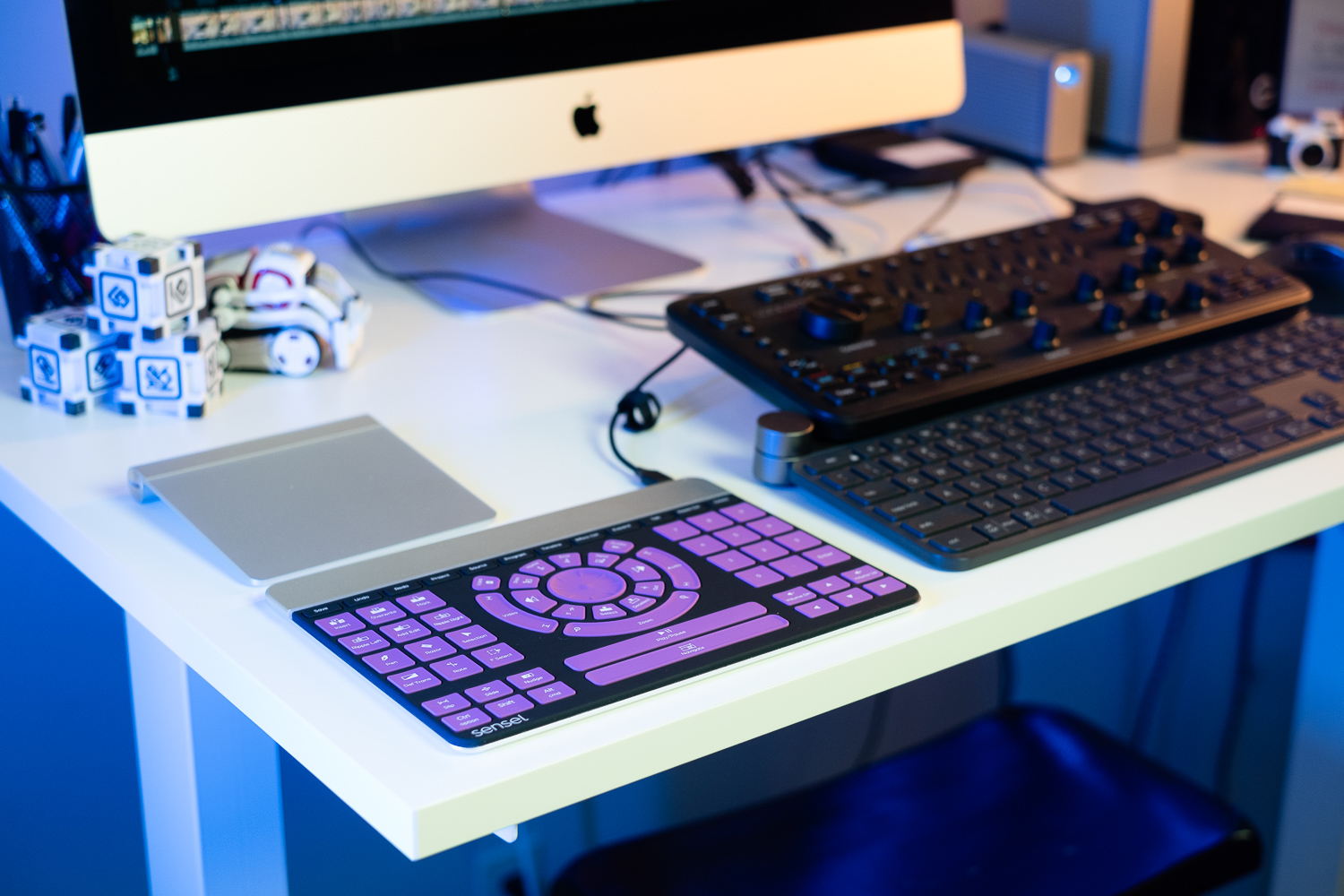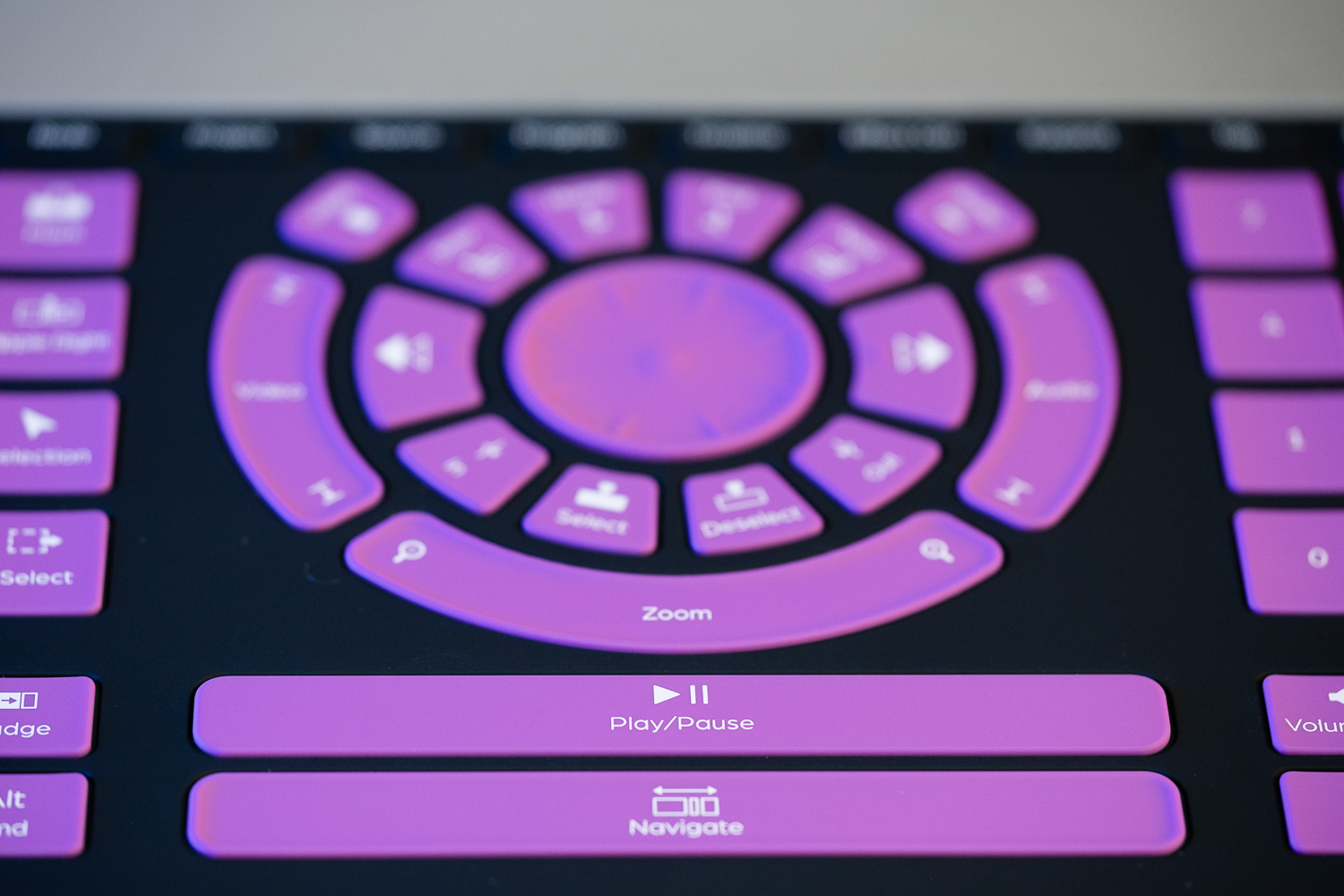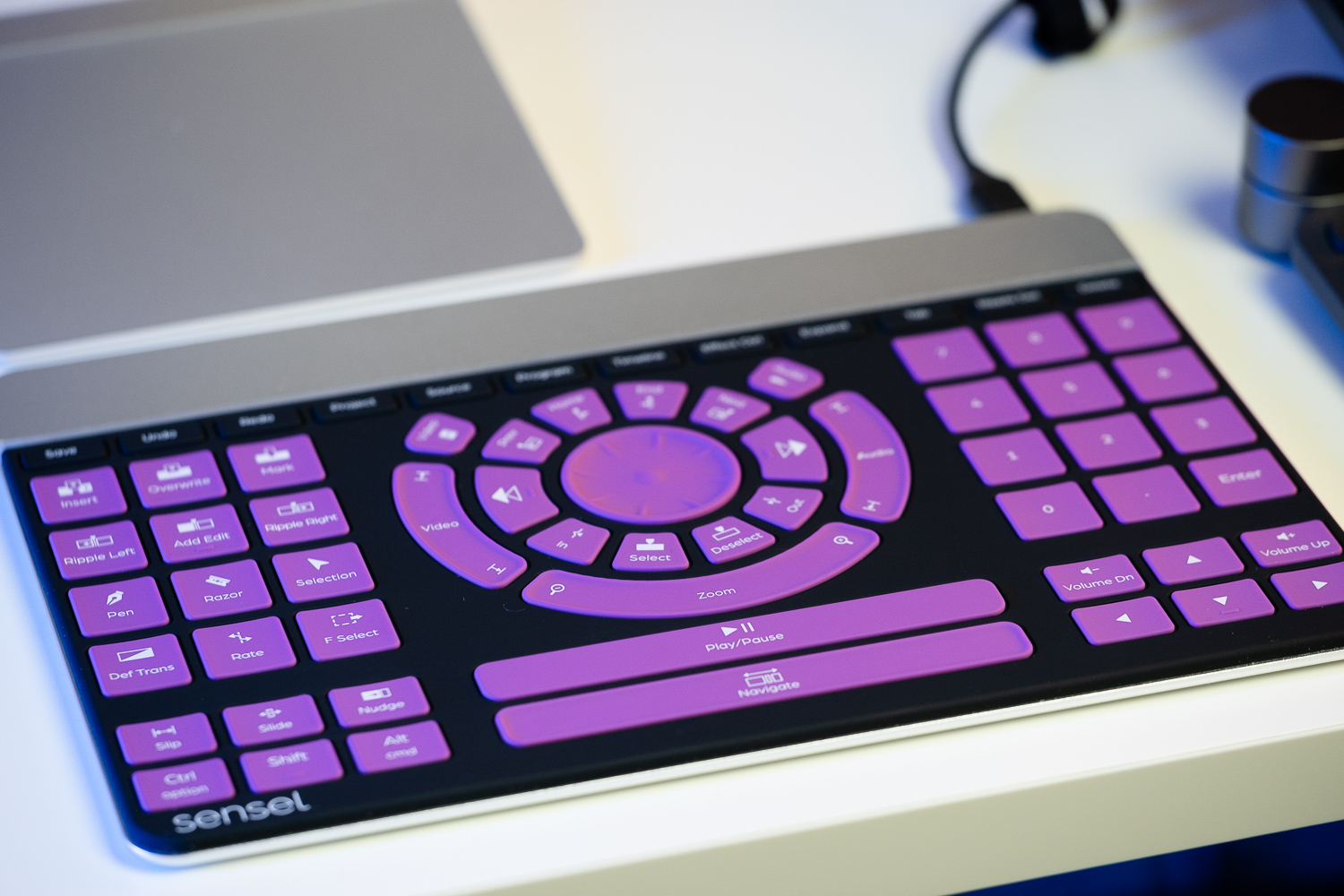Is Apple’s Touch Bar just not cutting it for your Final Cut Pro or Premiere Pro editing sessions? The Sensel Morph may be the touch-based solution you’ve been looking for. This multitouch, pressure-sensing accessory looks like a giant trackpad, but place one of several rubber “overlays” on it and it turns into a bespoke keyboard for any number of different creative applications.
The Morph arrived two years ago on the wings of a successful crowdfunding campaign, but the video-editing overlay is new. Digital Trends spent a brief time testing it, and we think it’s a useful — and very cool — input device for any type of serious video editor.
A Morph overlay is basically a rubber pad with some buttons or other types of controls stamped out of it. Sensel makes overlays for everyone from musicians and DJs to coders and writers, and each changes the functionality of the Morph completely. The video-editing overlay adds a collection of buttons, sliders, and even a jog “wheel,” all labeled specifically for Adobe Premiere Pro. Controls can be remapped and customized within the Sensel desktop app, making the overlay appropriate for other editing applications like Final Cut Pro or DaVinci Resolve. While the Morph needs to be plugged in via USB to program it, it can then be used wirelessly over Bluetooth.
Even though the buttons and sliders on the overlay don’t actually move, they still offer tactile feedback. You can feel the grooves between them just like keys on a keyboard, so once you learn the layout, you don’t have to look down to see where a particular control is. The jog wheel has ridges evenly spaced around its circumference that correspond to video frames, so you can feel exactly how many frames you’re advancing as you slide your finger around the wheel.
Pressure sensitivity comes into play for the fast-forward and rewind controls. Simply press harder to speed it up, or lighter to slow down. These controls respond in real time, so that as you begin to raise your finger, the playback speed will start to ramp down and finally come to a stop when you lift your finger completely. It’s these kinds of small touches that make the Morph both intuitive and fun to use.
If you’re not using the Morph in Adobe Premiere Pro, be prepared to spend an hour or two programming it for your application of choice (referencing the user guide is a good idea). The app is powerful in the number of options it offers, but figuring out the best way to customize it for your workflow will take time.
The Sensel Morph costs $249 and includes one overlay. Additional overlays cost $35. That’s not inexpensive, but it is $50 cheaper than when the Morph launched and seems a fair price for a device targeting a relatively small niche of customers. For the right user — which could be anyone from a YouTuber to a professional video editor — the Morph is worth a serious look.







